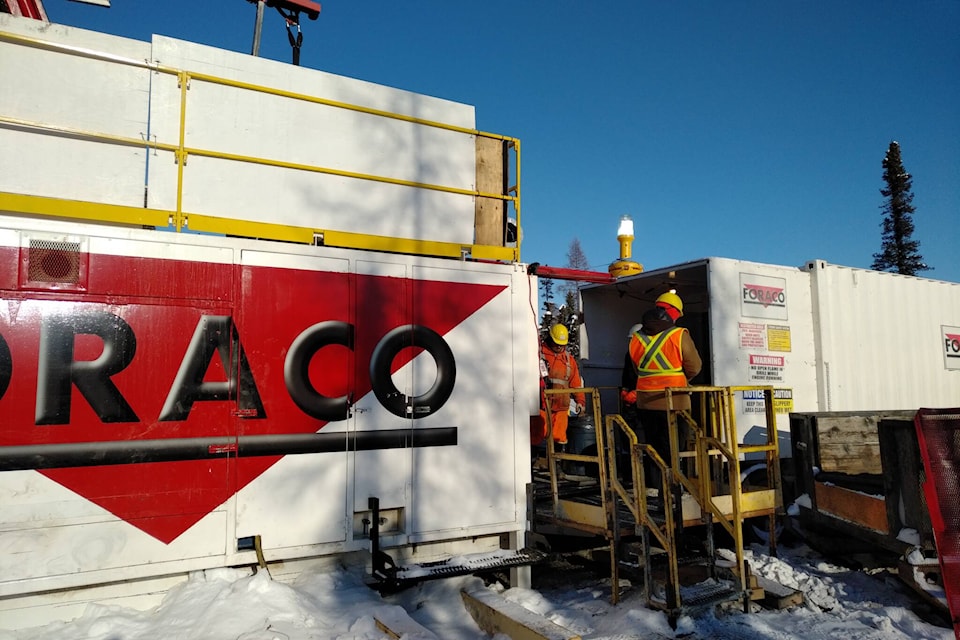The GNWT’s project to modernize its mineral extraction policies is stirring questions about how the territory can best profit from its natural resources, as well as report these profits in a transparent way.
The Legislative Assembly’s Standing Committee on Economic Development and Environment tackled these questions in its review of a working paper on resource royalties on Monday.
The review of the royalty regime is part of a broader initiative to overhaul mineral extraction policies in the territory following devolution in 2014. In 2019, the GNWT adopted the Mineral Resources Act, the first piece of legislation governing mineral extraction in the NWT that was drafted within the territory.
Currently, the NWT uses a profit-based royalty scheme, where the costs of extraction and allowances are subtracted from the final royalty. However, there are at least five different royalty options possible, including ones based on the total value of the resource and those based on the volume of material that’s extracted.
“The core question is: Are we going to look at the pure value, and ignore the costs that go into the development and production, or are we going to look at the profit that is a potential — it’s always going to be a potential before the decision is made to actually go ahead and build a mine,” said Minister of Industry, Tourism and Investment Caroline Wawzonek. “Or again, there can be the hybrid approach.”
Yellowknife North MLA Rylund Johnson suggested transitioning to a hybrid model like the one used by B.C. In that province, royalties for oil, for example, are calculated based on ownership interest, sales volume, sales value and production volume.
‘Charitable’ fiscal regime for the mining sector
According to the discussion paper, 50 per cent of the royalties collected from resource extraction go to the federal government. Of the remaining 50 per cent; one quarter — or 12.5 per cent of the total — goes to the Indigenous governments that signed on to the Devolution Agreement. This means the GNWT keeps 37.5 per cent of all the royalties it collects.
The 2022-‘23 territorial budget estimates there will be about $18.7 million in total for minerals, oil and gas royalties in the current fiscal year. That figure was about $24.2 million in 2021-‘22.
In 2017, an independent report by consultant Andrew Bauer concluded that the NWT “has one of the world’s most charitable fiscal regimes for the mining sector, one that captures between 20-30 per cent of economic rents from mining projects, net of costs.”
Quoting this report, Frame Lake MLA Kevin O’Reilly asked why the NWT isn’t doing more to profit from its own resources.
Wawzonek explained that this is because the NWT is an unusually expensive place from which to extract resources.
“There will be no royalties if there are no mines,” she said. “If that is an industry that we’re still looking to be in on, and to see the benefits of, directly and indirectly, then that’s where we have to find the balance.”
Confusion over royalty revenue
Committee members questioned the accounting of revenues from royalties in the budget. Johnson pointed out that the line item doesn’t clearly account for factors like royalties taken from Norman Wells petroleum production, which are collected by Aboriginal Affairs and Northern Development Canada and then remitted in part to the GNWT, rather than collected first by the GNWT .
“I think that with the one number we have, there could be a little more transparency,” he said.
O’Reilly concurred with Johnson, saying, “It’s almost incomprehensible what the number actually means and how much we actually get to keep,” he said.
As part of a public consultation on mineral royalties, residents have until July 29 to submit their feedback. Once the consultation is complete, next steps include publishing a report on the results of that consultation, and financial modelling and a jurisdictional review of the various options.
